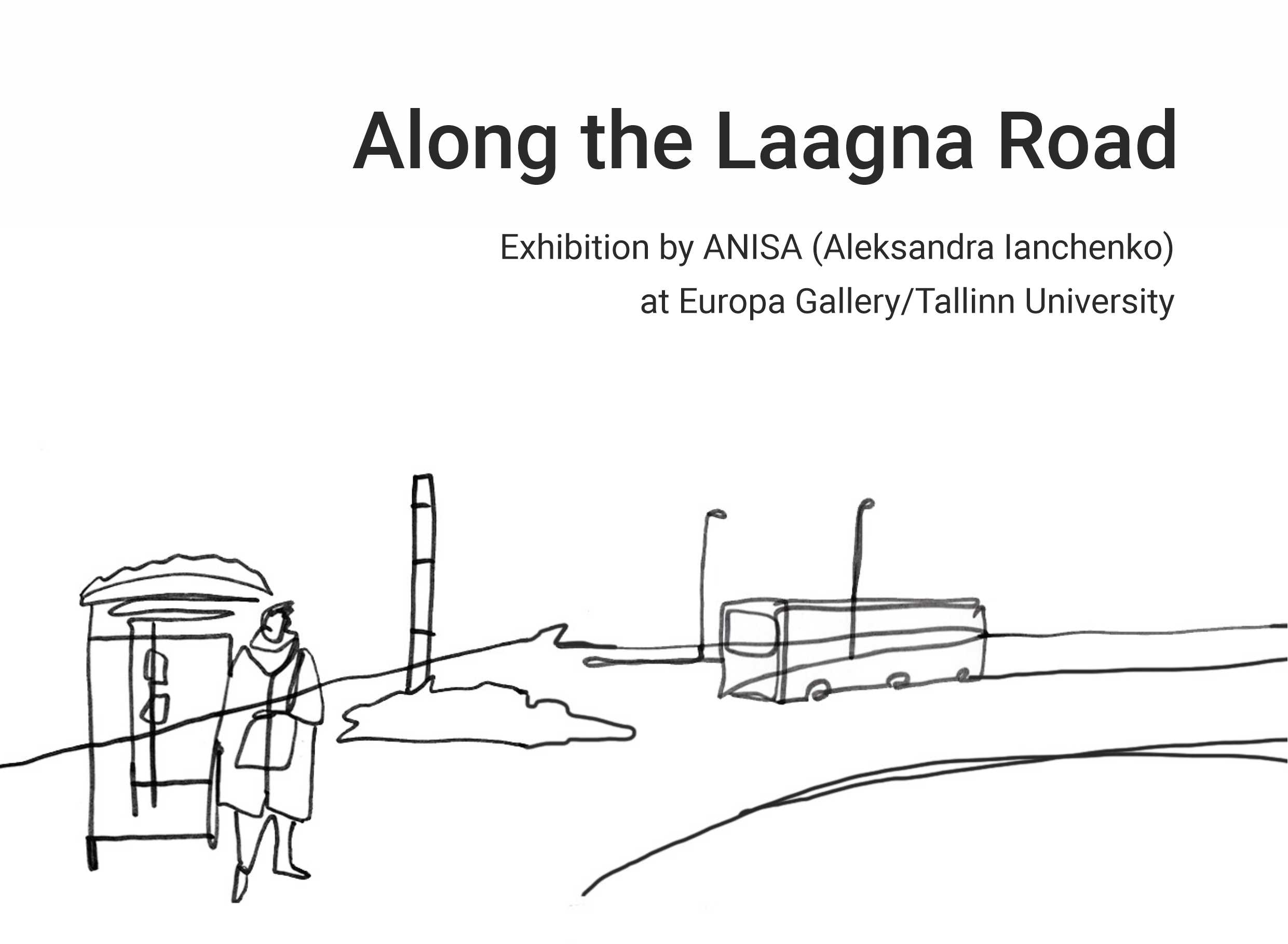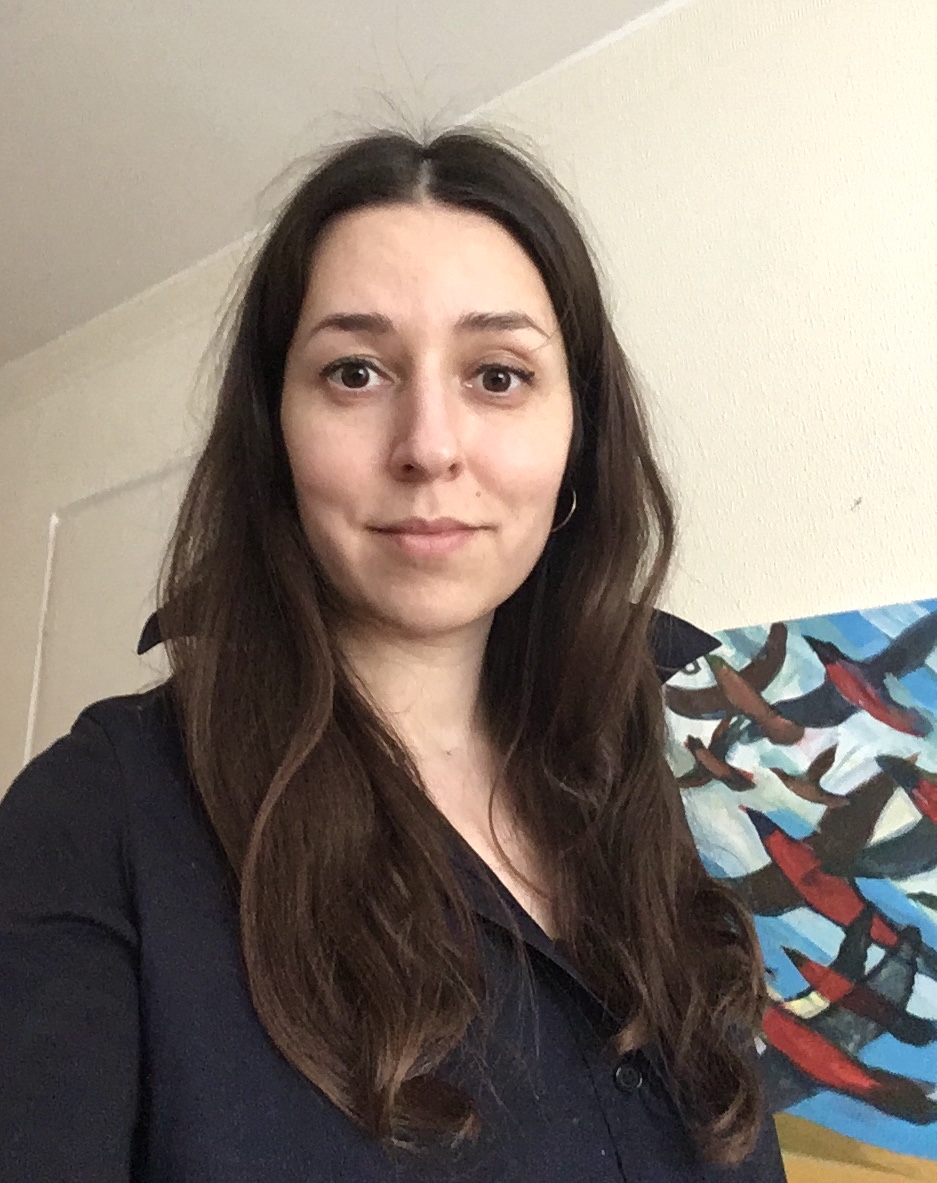Along the Laagna Road by ANISA (Aleksandra Ianchenko)
This exhibition is a part of my artistic research on the concept of atmosphere in relation to public transport and transport infrastructure.

The exhibition focuses on the Laagna road, the main transport channel in the Lasnamäe district, and asks what kind of atmosphere the road has, what it consists of, and how it might be researched with an artistic means of drawing.
Atmosphere is understood as certain feelings we experience in a particular spatial situation. These feelings are formed by material and sensorial configuration of this situation as well as by our individual sensibilities and socio-cultural dispositions. Atmospheres are complex, multifaceted phenomena which bridge the material and the sensory, the social and the affective. Furthermore, atmospheres are understood as ever moving and changing states which are perceived differently at any given moment. It creates methodological challenges of how to study such fleeting entities as atmospheres which nonetheless influence our experiences and perceptions of places. In my case, I am using the methodology outlined by Sarah Pink and Shanti Sumartojo (2019) which consists of three modalities: thinking in, about, and through atmospheres.
Sketching from bridges and on bus stops along the Laagna road is a way of thinking in the immediate atmosphere of space. It helps me to sense the spatial logic and dynamic of the road: If at the beginning the road runs like a noisy stream between high limestone walls, then towards the end it becomes more flat, narrow and quiet. While on bus stops, I encountered different people, some of whom reacted to my presence by striking up a short conversation. These encounters and reactions also contribute to the immediate atmospheres I sensed on the crowded Mustakivi stop or on the lonely final stop of Priisle. The next modality – thinking about atmosphere – is expressed in nine large graphic illustrations. They feature not only what I have seen along the road such as bridges and buildings but also what I have learned about it from other sources such as transport plans and newspaper articles. In particular, illustrations reflect some historical facts linked to the road such as traces from the Tondiraba meteorite or the planned but never implemented high-speed tramline. Furthermore, illustrations also visualise symbols which are ciphered in the names of bus stops, such as Lindakivi which is named after a female character from the Estonian epic.
Finally, the third modality of thinking through atmosphere or using this concept for further understanding of different aspects of everyday life is expressed in the form of this exhibition. Arranged together, spontaneous sketches and more reflective illustrations can offer one of the possible variants of how the atmosphere of the Laagna road can be perceived and represented. This variant is based on my knowledge about the road, on my experience of it as a passenger and walker, and on my artistic style of linear drawing. By displaying these artworks, I invite the audience to recall and reflect on their own uses and experience of the Laagna road and imagine their own variants of its atmosphere.

Sumartojo, Shanti; Pink, Sarah. 2019. Atmospheres and the Experiential World. Theory and Methods. Routledge ANISA is a creative pseudonym of Aleksandra Ianchenko, an artist, who is pursuing a joint doctoral degree at Tallinn University and Åbo Akademi University in Turku, Finland. Her artistic research is embedded in the project “Public Transport as Public Space in European cities: Experiencing, Narrating, Contesting” (PUTSPACE). Her doctoral research focuses on the atmosphere of tramways and how it is expressed in visual and public art. Besides analysing existing works of art that feature tramways and are placed in tramway infrastructures, she creates her own projects: from performances on board trams and performative walks along the rails to sketches and paintings.
